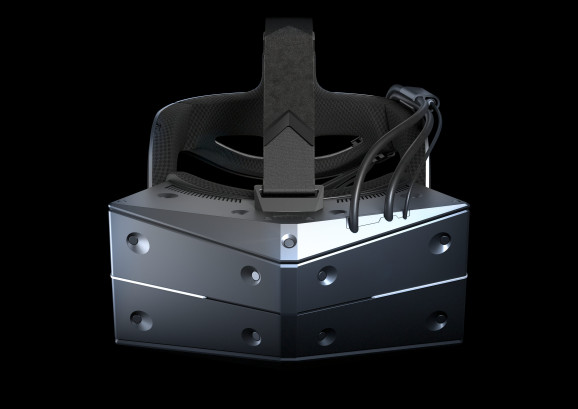StarVR One Debuts Next-Gen Headset Featuring Eye Tracking
Taiwan-based virtual reality startup StarVR has debuted its next-generation virtual reality headset, the StarVR One. The new headset comes with a new suite of features while also upgrading some of the key specs of the previous device. Unlike many of the headsets that are already available in the market, the StarVR One is built with lots of new technology that undoubtedly provides for a superior performance.
Key amongst these will be the new eye-tracking feature as well as its 100% human viewing angle. IT now provides a viewing angle of 210 degrees horizontally. The vertical viewing angle is 130 degrees. This is an enterprise-grade head-mounted display, a category that’s yet to curve out a strong niche even as the consumer-focused virtual reality products improve with time.
The new StarVR One headset’s 210-degree horizontal field of view corresponding to the natural human field of vision. The VR headset is therefore capable of simulating peripheral vision unlike many of the current consumer and enterprise-grade headsets. You are therefore unlikely to see the “diving mask” effect that is common in the existing headsets such as the Oculus Rift and the HTC Vive Pro.

An accurate simulation of the peripheral vision makes it possible for the viewer to get more immersive and lifelike VR experiences through their headsets. This is important in certain VR use cases such as in the flight simulators where users need a very realistic rendering of the content.
The StarVR virtual reality headsets have been hovering around many VR exhibitions around the world and the latest iteration continues to push the envelope as the company works towards building better headsets for the enterprise-grade virtual reality market. The company’s effort is aimed at building breakthrough technology that will enable companies to create new realistic VR renderings for various purposes in the business such as value creation and decisioning. With rapid advances in consumer VR headsets that have been witnessed in the recent years, the enterprise-grade virtual reality headsets are the last frontier in this industry.
While consumer applications have traditionally been confined to fun and entertainment such as gaming, enterprise-only VR applications are covering new ground in utility. They have been widely deployed in areas such as sales and marketing, operations, manufacturing, safety training and HR applications among others.
There are already other enterprise-only headsets in the market such as the HTC Vive Pro and the DAQRI that cater to the fast-growing enterprise market. Google Glass has also been fine-tuned and is now seeing some good traction as an enterprise augmented reality headset.
Currently, the market for these devices is highly differentiated between the consumer-focused and the enterprise-only headsets which tend to be more expensive and which offer better and more realistic rendering of the experiences. Magic Leap has just released its long-awaited Magic Leap One headset and Microsoft is planning to a debut a second act for its HoloLens. All of these developments are an indication of frenzied developments in the space and perhaps, in the future, these two categories might merge with powerful headsets being built both for the enterprise-only and the end user market.
One of the enterprise applications to which the StarVR One headset can be put is in business training. With its eye-tracking feature, it is possible to measure the Interpupillary Distance and also make adjustments in the images for each viewer. The headset also has a powerful display that will deliver a high quality render of the virtual images to where the user is looking to provide for perfect clarity.
The eye-tracking feature can accomplish much more. For example, it yields both a gaze analysis and intent data so as to interpret the eye movements of the user. Enterprise users will also love the fact that it has multiple positional tracking systems. The device can be seamlessly used with the SteamVR 2.0 trackers. With its visual markers, it is also possible to use it with camera-based optical tracking, enabling creators to customize experiences that work for them.
https://virtualrealitytimes.com/2018/08/18/starvr-one-debuts-next-gen-headset-featuring-eye-tracking/https://virtualrealitytimes.com/wp-content/uploads/2018/08/StarVR-One-Headset.jpghttps://virtualrealitytimes.com/wp-content/uploads/2018/08/StarVR-One-Headset-150x90.jpgAR HeadsetsHardwareVR HeadsetsTaiwan-based virtual reality startup StarVR has debuted its next-generation virtual reality headset, the StarVR One. The new headset comes with a new suite of features while also upgrading some of the key specs of the previous device. Unlike many of the headsets that are already available in the market,...Sam OchanjiSam Ochanji[email protected]EditorVirtual Reality Times - Metaverse & VR
